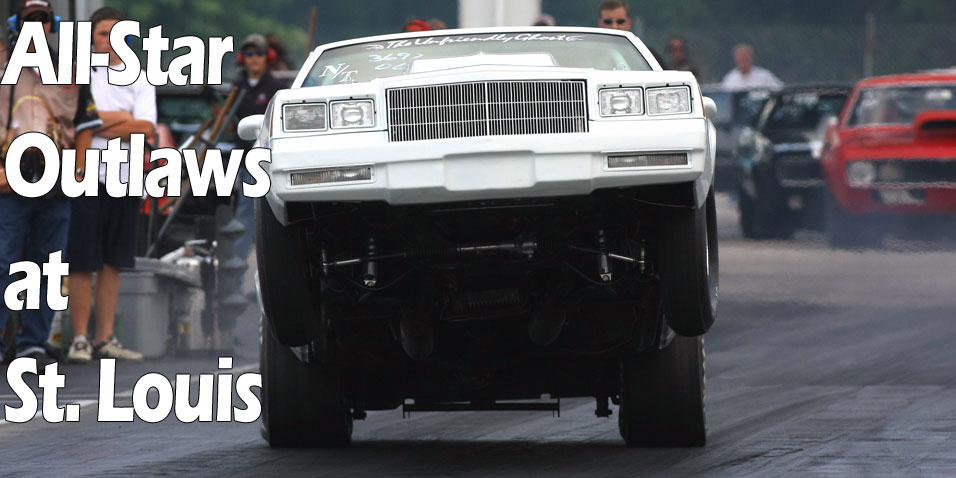
When some inclement weather rolled in early on Saturday morning, Aug. 1, it looked unlikely there would be racing at Gateway International Raceway for the second All-Star Outlaws event, but after a few hours of intense work by GIR staff the track was ready to run.
Alton, Ill., native Duane Rister took home the trophy in the Outlaw class with a string of four-second eighth-mile runs. In Drag Radial Steven Biggs took out Tom Derby in the final round of action after a string of record-setting runs for Biggs. The most exciting race of the night without a doubt was the Super Street final round with Chris Webster taking down William Johnson after both drivers got close to the centerline and with Johnson eventually crossing the line.
The main difference between the Outlaw All-Stars and any other race is the lack of rules. All cars must pass NHRA safety inspection and have doors, but the only rules are tire size limits and being unable to run wheelie bars in certain classes. The Outlaw class has no other rules other than being able to pass safety inspection and the cars must have doors. Outlaw competition features close racing only provided by eighth-mile racing, while all other classes compete on the quarter mile.
Super Street requires the cars to run on a tire no wider than 10.5 inches. Drag Radial requires a DOT approved tire of up to 13 inches wide. Both Drag Radial and Super Street prohibit the use of “wheelie” bars. Also contested are five index classes starting at 10.00 seconds at one-second intervals to 14.00 seconds.
Outlaw Eliminator featured six cars that will make a return to GIR Aug. 7-8 for the ADRL Hardee’s Gateway Drags II: David Hance (Extreme Ten-Five), Jeff Dickey (XTF), Terry Murphy (Pro Nitrous), Cathy Belcher (Pro Extreme), Dan Saitz (PX), and Travis Swearingen (PX).
Saitz made his St. Louis debut with a brand new blower on top of his familiar black GT500 Mustang that replaced the turbochargers that he is so well known for running. Saitz was not shaken by the change and said, “The change to the blower has been about what I expected, and even staging and launching hasn’t changed that much since I decided to use a two-step.”


